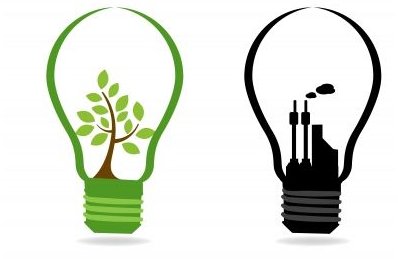Why is Light Pollution Bad? Learn About the Negative Effect of Light Pollution on Natural Resources, Animals & Insects
Its not only air and water around us that are polluted, even the light around us is polluted. Bright and shining lights around us, on the shopping malls, hotels, offices, and restaurants are contributing heavily to pollute the quality of light and life around us. Light pollution is not known to much people and that’s why the situation becomes even more dangerous. ignorantly people go on lighting their houses, hotels, residential places, and commercial complexes just to attract people. But its just not the people, the devil of pollution also gets attracted to these expensive and, most of the times, meaningless lights hanging in the form of sign boards,neon lamps, and banners. In the subsequent sections, we will try to understand how light pollution affects our surroundings and our lives.
Effects of Light Pollution on Natural Resources
Light pollution involves an annoying glare at night obscuring our view of the stars. But is that all? As it turns out, there are many reasons why light pollution is bad. The problem is the overuse of lighting. Humans use light in residential and commercial buildings. We use headlights and streetlights for transportation and security. We use so much electricity that an estimated two-thirds of the world’s population can no longer see the stars. The celestial bodies are washed out by sky glow, a bright haze caused by the scattering of artificial light by dust particles in the air.
Electricity used to power artificial light has altered the nighttime environment of large portions of the Earth. The Environmental Protection Agency says most electricity used for lighting is produced with coal and oil. The emissions of burning coal and oil include carbon dioxide, sulfur dioxide and nitrogen dioxide, which in effect, create greenhouse gas, acid rain and smog. Unfortunately, much of the energy used to produce electricity is wasted. Roughly one-third of nighttime lighting escapes into the environment, according to the New Rules Project, a program sponsored by the Institute for Local Self-Reliance. The stray artificial light creates over-illumination, light trespass, clutter, sky glow and glare as described in Light Pollution: the Causes of Light Pollution.
Effects of Light Pollution on the Nocturnal Environment
Scientists have studied how light pollution affects the visual orientation of wildlife. Birds that rely on constellations as a guide during migration are led off course by artificial light around urban areas. The artificial light confuses birds, upsets their natural steering ability and results in deadly collisions with towers and smokestacks. Researchers see similar effects of light pollution in sea turtle hatchlings. The natural glow of the horizon usually signals turtles toward the water, but competing artificial light from beachfront properties can cause them to head inland. Hatchlings are vulnerable to passing cars and predators.
Artificial light disrupts natural patterns of light and dark, according to Ecological Light Pollution in Frontiers in Ecology, a review published in the Ecological Society of American. Glare produced by artificial light affects foraging, communication and other critical behaviors. Researchers are beginning to seeing how light pollution affects reproduction, citing dragonflies as an example. An article at New Scientist.com says dragonflies are attracted to the glare of road pavement. The insects lay their eggs on car hoods, a location where eggs are less likely to hatch. Scientists believe the effects may cascade up the food chain.
On a positive note, a growing number of people are recognizing the effects of light pollution on the environment. Scientists, astronomers, naturalists have been educating the public about the effects of light pollution. Now state and local government agencies are trying to reduce light pollution through legislation. Engineers and architects and other members of the lighting design community are making efforts to limit light pollution with more efficient fixtures.
Minimizing Light Pollution
Pollution control, of any kind, is need of the hour and it becomes very important to preserve the environment for our coming generations. Improving light fixtures, adjusting types of light sources, re-designing light plans, and optimum use of available resources are some of the remedial measures that can be taken to keep a check on light pollution. Obviously these measures are not as easy as they sound because implementing them will require money, time, and above all, sincerity and determination to protect the environment. A strong will power is what we need today to step out of our comfort zones and control the worsening condition of our mother Earth. A sense of awareness and belonging must prevail amongst the people because ignorantly, we are damaging our surroundings ourselves without even knowing that it is going to affect our life, health, and future greatly.
References
- South Norfolk Council Homepage, Light Pollution: Clean Neighbourhood and Environments Act 2005 Environmental Protection Act 1990, http://www.south-norfolk.gov.uk/environment/media/light_pollution_factsheet.pdf
- International Dark-Sky Association (IDA), The Problem with Light Pollution, http://www.darksky.org/assets/documents/is001.pdf
- Image: Light Pollution by <em>digitalart</em>, Freedigitalphotos.net
